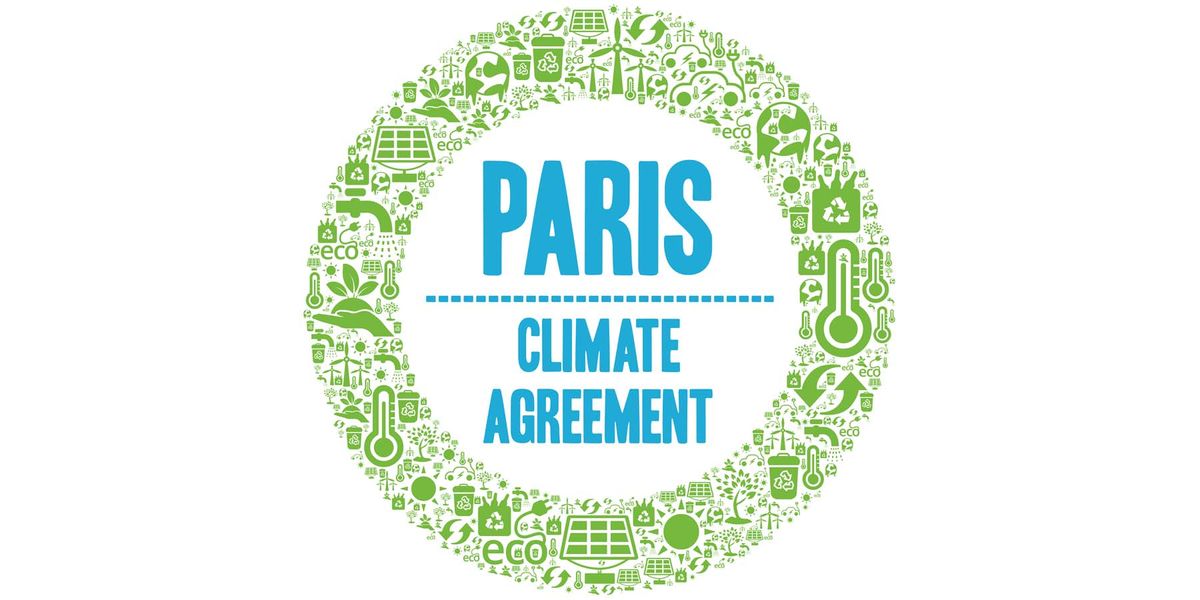1. “Review India’s progress on its Paris Agreement commitments. What challenges does it face in balancing development with decarbonisation, and how can carbon markets and bilateral crediting mechanisms support its future NDC targets ahead of COP30?”
| Syllabus: General Studies – III:Environmental conservation; Environmental pollution and degradation; Environmental Impact Assessment |
The Paris Agreement (2015) envisages limiting global temperature rise to well below 2°C, with efforts towards 1.5°C. India, as a key signatory, has pledged ambitious climate goals while emphasising the principle of common but differentiated responsibilities.
Challenges in Balancing Development and Decarbonisation
- Rising energy demand necessitating continued coal use for base-load power.
- Technology and finance gaps due to limited climate finance from developed nations.
- Industrial “hard-to-abate” sectors such as steel and cement.
- Employment risks in coal-dependent regions and need for a just transition.
- Equity concerns vis-à-vis historical emissions.
Progress on Commitments
- Emissions Intensity: Reduced by 33% between 2005–2019, progressing towards the target of 45% by 2030.
- Renewable Energy: Over 50% of installed power capacity from non-fossil sources achieved ahead of schedule.
- Carbon Sink: Afforestation drives underway, but creating an additional 2.5–3 billion tonnes CO₂ equivalent sink by 2030 remains difficult.
- Global Leadership: Initiatives like the International Solar Alliance and Mission LiFE have enhanced India’s role in global climate diplomacy.
Role of Carbon Markets & Bilateral Crediting
- India Carbon Market (2026): Mandatory emission-intensity targets across 13 sectors with tradable certificates.
- Joint Crediting Mechanisms (JCMs): Collaboration with Japan and others can mobilise finance, technology, and share emission credits.
- Enables flexibility for India to pursue low-carbon pathways without compromising growth.
India has demonstrated significant progress on its Paris pledges, yet bridging the finance–technology gap and ensuring energy security remain critical. Strengthened carbon markets and bilateral crediting mechanisms, if effectively leveraged, can balance developmental needs with decarbonisation and help India meet its enhanced NDCs ahead of COP30.
| PYQ REFERENCE: [2025] Q. Write a review on India’s climate commitments under the Paris Agreement (2015) and mention how these have been further strengthened in COP26 (2021). In this direction, how has the first Nationally Determined Contribution intended by India been updated in 2022? . [15 Marks] |
2. “India has unveiled a roadmap for achieving nuclear fusion energy with the proposed SST-Bharat tokamak. Review India’s efforts in fusion research in comparison with global initiatives. What are the opportunities and challenges in making fusion energy commercially viable for India’s long-term energy security?”
| Syllabus: General Studies – III:Achievements of Indians in S&T; Indigenisation of technology & development of new technology. |
Nuclear fusion, the process of fusing light nuclei to release immense energy, is considered the “holy grail” of clean energy. India’s roadmap with SST-Bharat aims to achieve a demonstration reactor by 2060, complementing its participation in ITER. While the promise is high, challenges remain in cost, technology, and timelines
Challenges for India
- Long timelines: India’s target of 2060 is slower compared to global programmes (UK 2040, US firms 2030s).
- High costs: ₹25,000 crore estimated for SST-Bharat; economic viability uncertain.
- Technology gaps in plasma confinement and sustaining high Q values (ITER aims for Q=10, India still below
- Private sector absence in India vs booming private fusion start-ups abroad.
- Competing energy priorities — solar, wind, and nuclear fission expansion.
- Global competition may outpace India, reducing strategic leverage.
- Risk that commercial fusion power may remain elusive or unaffordable even by mid-century.
Opportunities for India
- Fusion promises virtually limitless clean energy with minimal radioactive waste.
- Enhances energy security by reducing reliance on fossil fuels.
- Builds technological autonomy in advanced materials, superconductors, and plasma sciences.
- Strategic dividends in defence and space technologies.
- Potential to align with global leaders (EU, US, China, Japan) and attract partnerships.
- Fusion R&D can strengthen the domestic industrial base through high-tech spin-offs.
- Supports India’s net zero by 2070 target and diversification of its nuclear programme.
India’s Progress in Fusion Research
- SST-1 Tokamak at IPR has produced plasma up to 650 ms, designed for 16 minutes.
- Participation in the International Thermonuclear Experimental Reactor (ITER) project in France.
- Proposal for SST-Bharat, a fusion–fission hybrid reactor with 130 MW capacity.
- Introduction of digital twins for plasma simulations and testing.
- Development of superconducting magnet technology and plasma modelling.
- Indigenous expertise in high-temperature materials and cryogenics.
- Growing academic–scientific collaborations for advanced plasma physics research.
India’s cautious yet ambitious roadmap reflects optimism in fusion’s potential but acknowledges current limitations. While commercial viability is uncertain, R&D in fusion will generate strategic technological benefits. To stay competitive, India must scale up funding, involve private industry, and deepen global partnerships.
| PYQ REFERENCE: [2025] Q. The fusion energy programme in India has steadily evolved over the past few decades. Mention India’s contributions to the international fusion energy project – International Thermonuclear Experimental Reactor (ITER). What will be the implications of the success of this project for the future of global energy? [10 Marks] |

